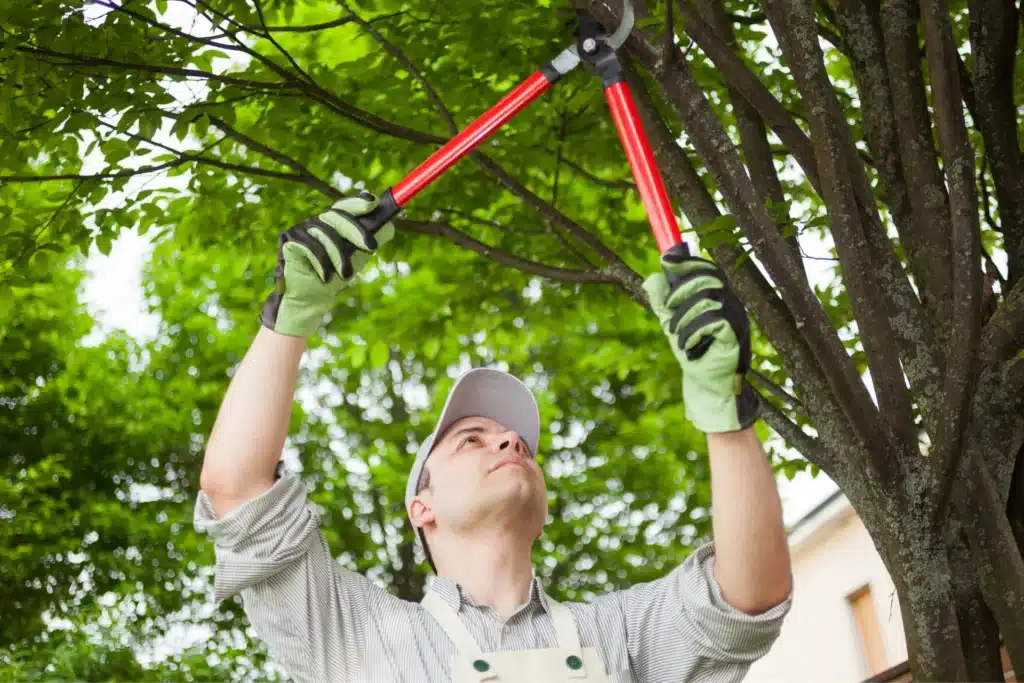Trimming a magnolia tree is an important component of its care, since it is necessary for its health, attractiveness, and lifespan. Understanding how to prune these magnificent trees may make a major difference in their health. As a tree known for its beauty and elegance, the magnolia needs careful trimming. This article will walk you through the difficult process of pruning a magnolia tree, including thorough insights, professional suggestions, and critical information for preserving its best health and aesthetic appeal. Explore this instructive essay to discover the technique of trimming magnolia trees and ensuring their continuous vibrancy and beauty in your landscape.
Why Trim Magnolia Trees?
Trimming magnolia trees provides more than just aesthetic advantages. Pruning these magnificent trees is essential for their general health and well-being. Trimming on a regular basis encourages appropriate development, ensures a balanced structure, and prevents branch overpopulation. This technique improves air circulation and sunshine penetration, both of which are critical to the tree’s health. Furthermore, cutting dead, damaged, or diseased branches supports the health of the tree by avoiding the spread of illnesses or infestations. Furthermore, a well-trimmed magnolia tree improves its appearance by fostering lush foliage and bright blossoms. Trees that are properly trimmed show off their natural beauty while lowering the danger of storm damage by removing weak or hazardous branches. Finally, pruning magnolia trees isn’t only for show; it’s a necessary exercise for their general health.
When to Trim Magnolia Tree?
Determining the right time to prune a magnolia tree is critical for its health and growth. Pruning magnolia trees is best done in late winter to early spring, particularly between late February and early March. For various reasons, this timing is favorable.
Magnolia trees remain dormant from late winter to early spring, which means they are not actively growing. This dormant stage reduces stress on the tree during pruning since it is less vulnerable to harm or shock from the trimming procedure. Trimming during this time also assists the tree to repair more rapidly as it prepares for the forthcoming growth season.
Another reason for choosing this time of year is to prevent interfering with the bloom cycle of the magnolia. Most magnolia species bloom in early spring, and trimming shortly after blossoming may interfere with the tree’s capacity to produce next year’s blooms. By trimming in late winter, you allow the tree plenty of time to heal and develop new buds for the next flowering season.
However, it is important to remember that various exclusions may apply based on specific conditions or the status of the tree. For example, if there are safety issues owing to broken or dangerous branches, prompt pruning may be required regardless of the season.
Tools and Material
- Pruning shears
- Loppers
- Pruning saw
- Pole pruners
- Safety gear
Step by step guide of trimming magnolia tree
Before deciding on a pruning plan, always evaluate the tree’s health, growth trends, and local climate conditions. A licensed arborist or tree care specialist may provide specialized recommendations based on the specific needs of your magnolia tree.
Evaluate the Tree: Assess the tree’s overall health, identifying dead, damaged, or diseased branches needing removal.
Plan the Cuts: Decide which branches to prune, aiming to maintain the tree’s natural shape while enhancing its health and aesthetics.
Use Clean Tools: Ensure your pruning tools are clean and sharp to make precise cuts, reducing stress on the tree.
Start with Dead Branches: Begin by removing dead or diseased branches first, cutting them close to the main trunk or parent branch.
Remove Crossed Branches: Eliminate branches that rub or cross each other to prevent damage and encourage healthy growth.
Trimming Technique: Make cuts just outside the branch collar (the swollen area at the base of the branch) at a 45-degree angle to aid healing.
Avoid Over-Pruning: Maintain a balance while trimming; avoid removing more than a quarter of the tree’s branches to prevent stress.
Step Back and Assess: Regularly step back to evaluate the tree’s appearance and symmetry throughout the trimming process.
Final Touches: Once done, clear away debris and consider applying a pruning sealant to larger cuts if desired.
Post-Trim Care: Provide proper aftercare, including watering and monitoring the tree’s health to aid recovery.
Adhering to these steps ensures a systematic and efficient trimming process, promoting the magnolia tree’s health and aesthetic appeal.
Pruning Young Magnolia Trees
Pruning young magnolia trees takes special care in order to maintain healthy growth patterns. Begin by removing any dead, damaged, or crossed branches, seeking to form the tree’s structure while allowing appropriate airflow and sunlight penetration. Maintain a central leader (main upright stem) and well-spaced lateral branches to promote a balanced canopy. Limit pruning to corrective cuts, removing any competitive or weak branches that impede the tree’s growth. Excessive pruning should be avoided since young magnolia trees are more delicate and may be stressed by it. Additionally, avoid cutting more than 25% of the tree’s leaves to avoid slowing development. Regularly monitor the tree’s progress and modify trimming as needed to ensure a strong and healthy framework for future growth. Early intervention is essential.
Pruning Mature Magnolia Trees
Pruning mature magnolia trees necessitates a methodical approach in order to preserve their health and attractiveness. Remove any dead, diseased, or overloaded branches to allow for optimum ventilation and sunlight penetration. Begin by cutting lower branches to offer clearance and to improve the appearance of the tree. Examine the tree’s structure carefully, intending to keep its original shape while eliminating any crossing or rubbing branches. When trimming bigger limbs, take care to make accurate cuts well beyond the branch collar to facilitate healthy healing. Reduce the quantity of live wood removed to avoid stressing the tree. To avoid bloom loss the next year, avoid severe trimming throughout the growth season. In order to keep your mature magnolia tree healthy, evaluate and trim it on a regular basis, stressing corrective cuts and little interference.
FAQS
1. Is it essential to prune a magnolia tree?
Trimming is critical for the health of a magnolia tree, guaranteeing optimal growth, look, and lifespan.
2. When is the optimum time to trim?
Pruning a magnolia tree is best done in the late winter to early spring, when the tree is dormant.
3. Can I trim a magnolia tree myself?
It is doable with the right expertise, equipment, and prudence, but bigger or more intricate pruning should be done by a professional.
4. How much should I trim my magnolia tree?
Pruning should be limited to dead, damaged, or overloaded branches, with no more than 25% of the live foliage removed.
5. Can excessive trimming kill a magnolia tree?
Yes, excessive trimming can stress the tree, decreasing its health and perhaps inhibiting future growth.
Conclusion
Finally, knowing how to prune a magnolia tree is critical for its health and look. Pruning techniques, timing, and upkeep maintain the tree’s health and aesthetic appeal. You may efficiently manage a healthy and thriving magnolia tree in your garden by following the indicated methods, which include appraisal, accurate trims, and post-trim maintenance, complementing your outdoor environment with its timeless beauty and elegance. Regular inspection, careful trimming, and little intervention all contribute to the tree’s long-term health and beauty for years to come.





